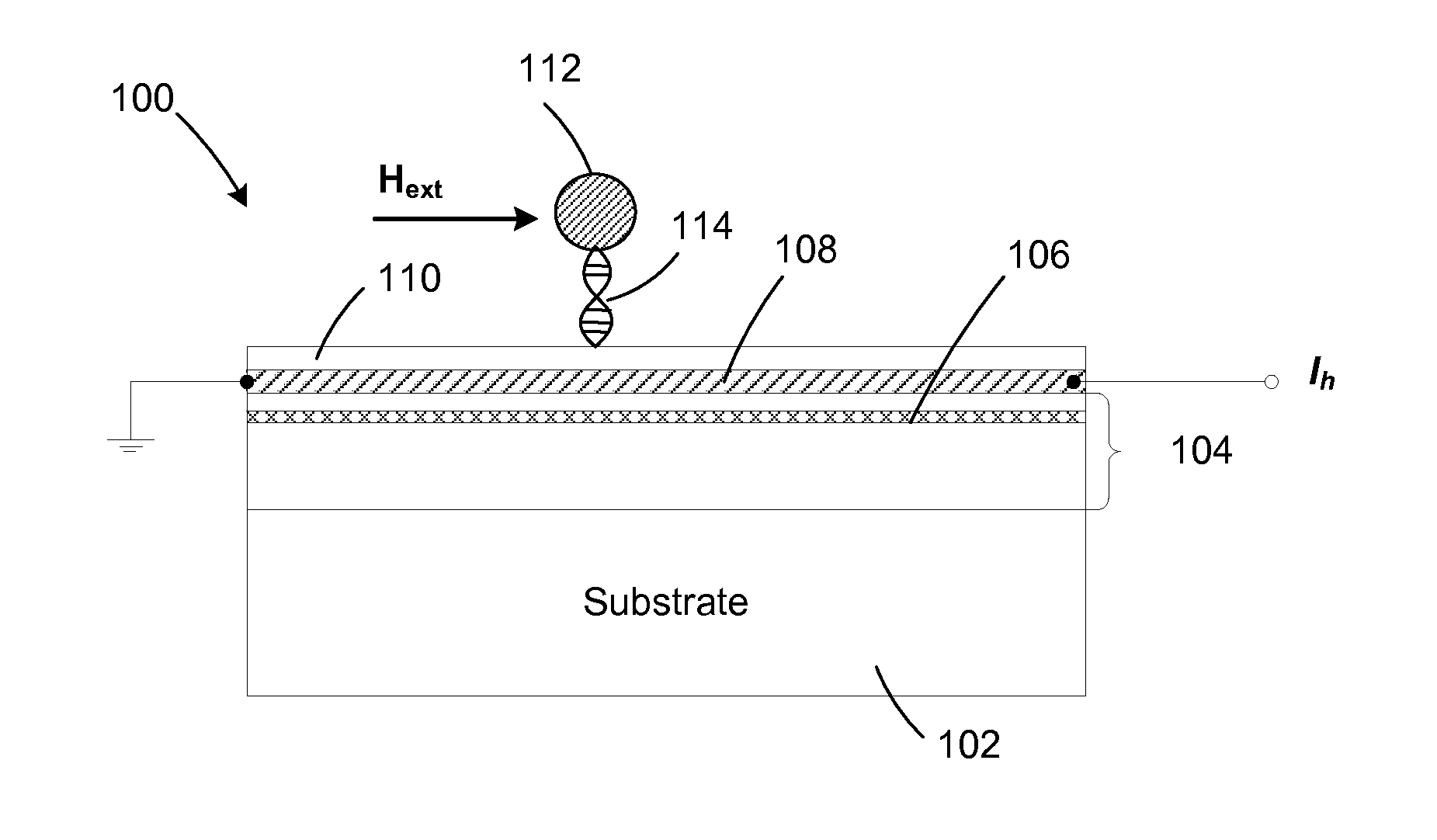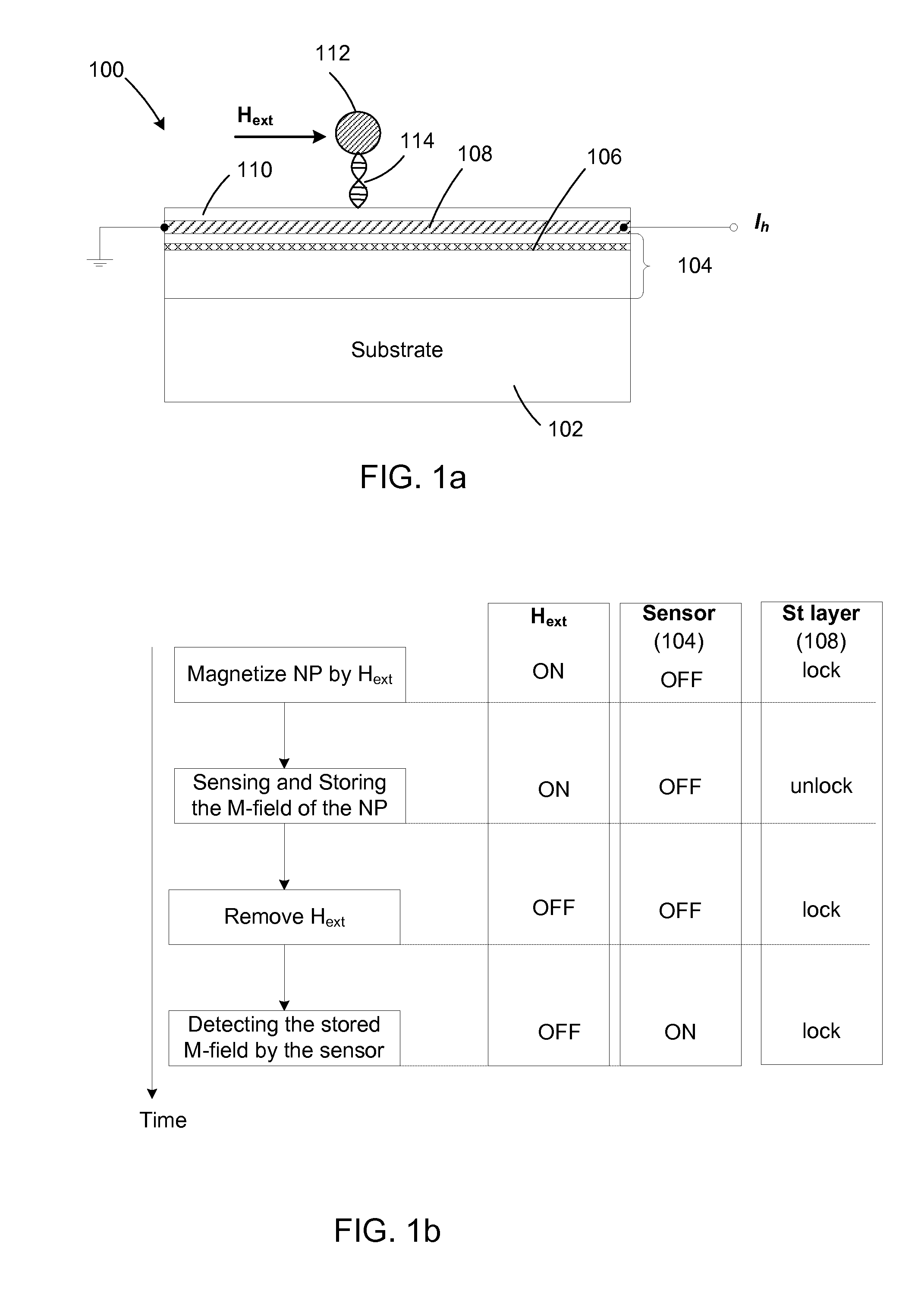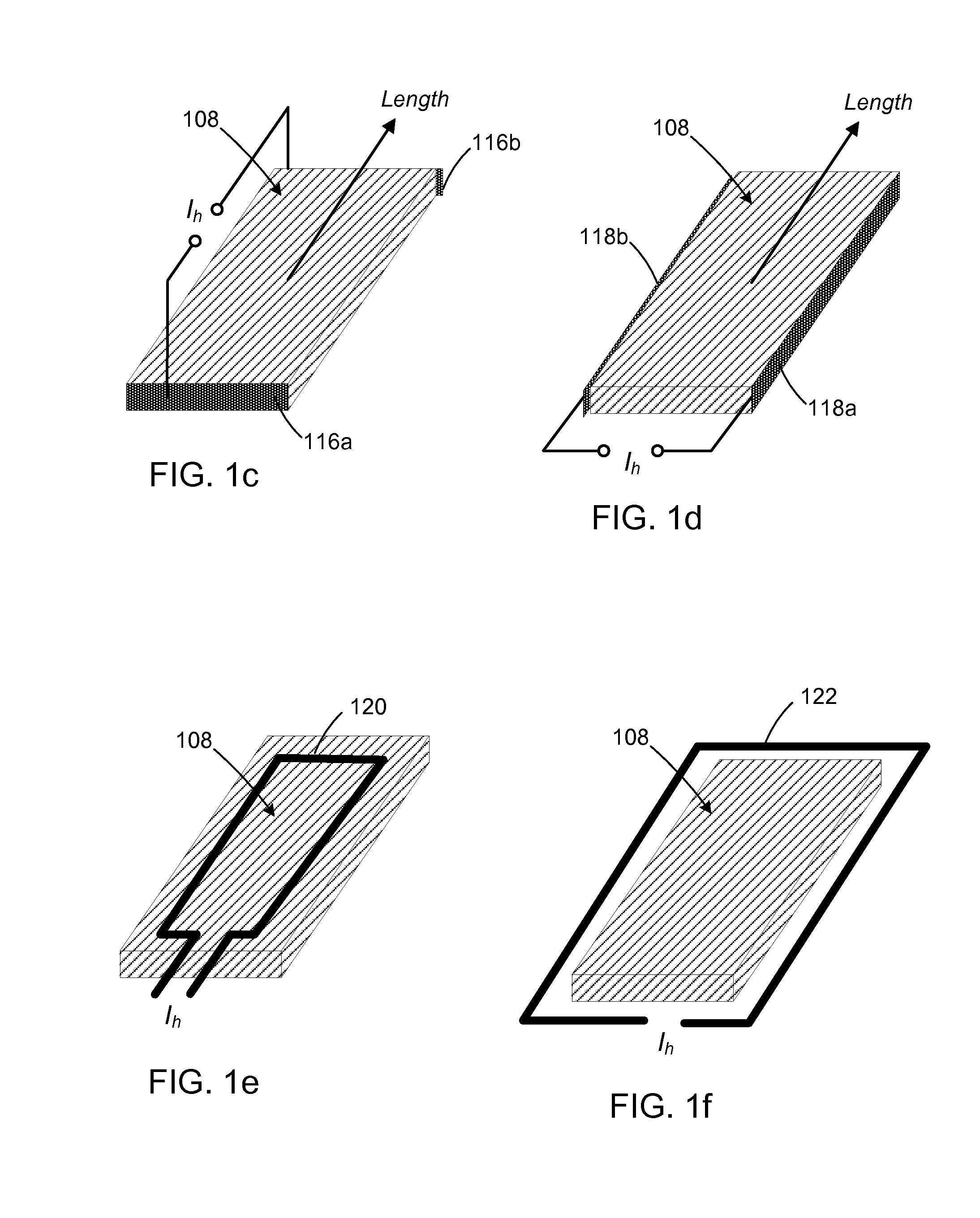Magnetic biosensor and a magnetic biosensor array comprising the same
a biosensor and magnetic technology, applied in the field of magnetic biosensor arrays, can solve the problems of not detecting single biomolecule, single np detection, and biosensors that are not ready for practical biomolecular applications
- Summary
- Abstract
- Description
- Claims
- Application Information
AI Technical Summary
Benefits of technology
Problems solved by technology
Method used
Image
Examples
Embodiment Construction
[0030]Hereinafter, selected examples of a magnetic biosensor and a biochip comprising an array of magnetic biosensors will be discussed in the following with reference to the accompanying drawings. It will be appreciated by those skilled in the art that the following discussion is for demonstration purposes, and should not be interpreted as a limitation. Other variances within the scope of this disclosure are also applicable.
[0031]Referring to the drawings, FIG. 1a diagrammatically illustrates a cross-section of an exemplary biosensor. It is noted that other elements, such as mechanism (e.g. a conducting wire) for generating DC or AC in-plane (or vertical) magnetic field, circuits for collecting and processing magnetic-resistance (MR) signals, circuits for operating the individual testing sites, as well as microfluidics devices for delivering nanoparticles to the individual testing sites, are removed from the diagram for simplicity.
[0032]As illustrated in FIG. 1a, the biosensor (100...
PUM
 Login to View More
Login to View More Abstract
Description
Claims
Application Information
 Login to View More
Login to View More - R&D
- Intellectual Property
- Life Sciences
- Materials
- Tech Scout
- Unparalleled Data Quality
- Higher Quality Content
- 60% Fewer Hallucinations
Browse by: Latest US Patents, China's latest patents, Technical Efficacy Thesaurus, Application Domain, Technology Topic, Popular Technical Reports.
© 2025 PatSnap. All rights reserved.Legal|Privacy policy|Modern Slavery Act Transparency Statement|Sitemap|About US| Contact US: help@patsnap.com



